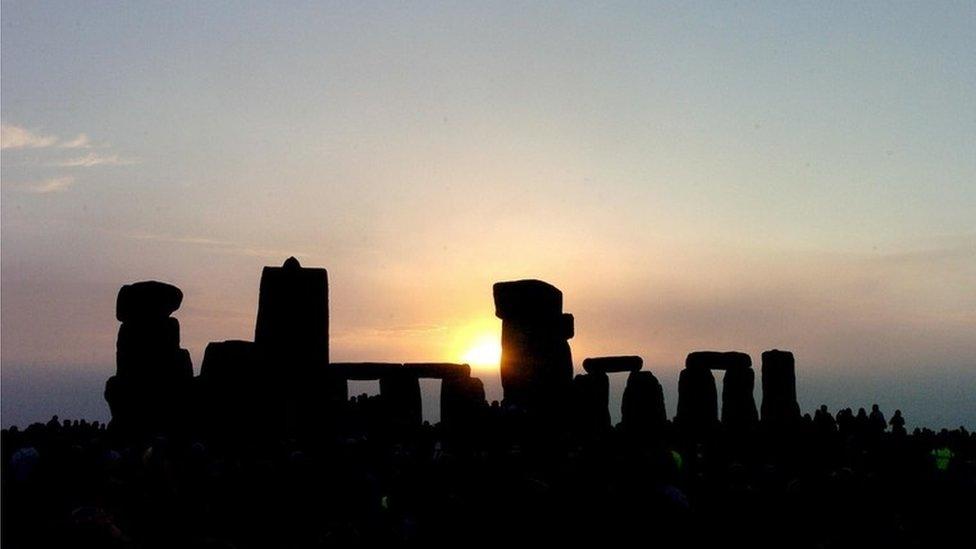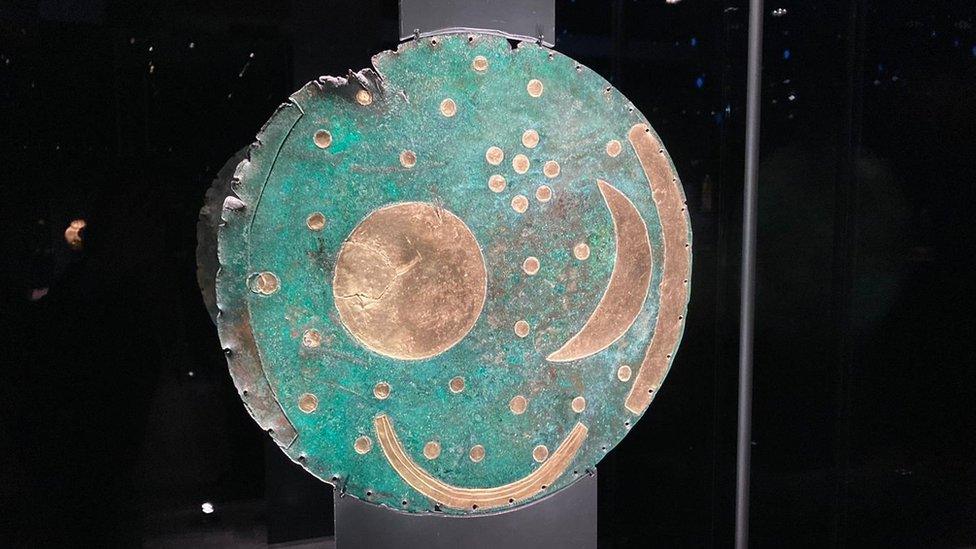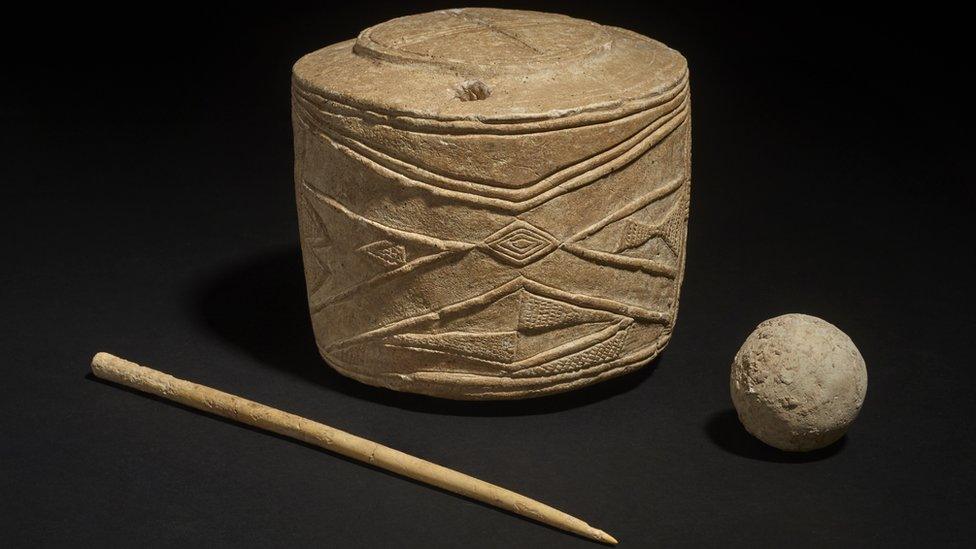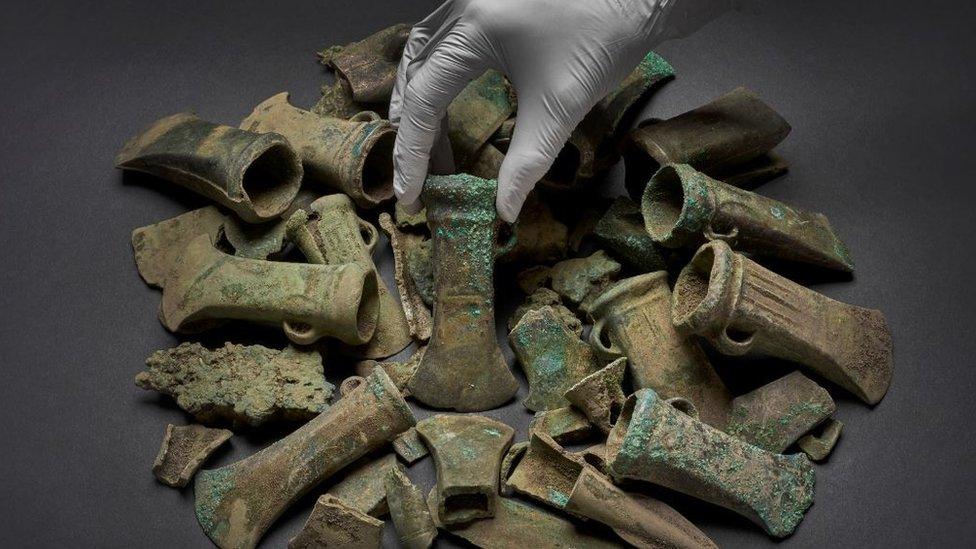Stonehenge was a solar calendar, according to research
- Published

The sun is framed by the same stones during every solstice
A new study suggests that Stonehenge once served as a solar calendar.
Research showed the stones were added about 2500BC and remained in the same formation, indicating they worked as a single unit such as a calendar.
Professor Timothy Darvill said the Wiltshire stone circle's layout served as a physical representation of the year.
He said the research indicated "the site was a calendar based on a tropical solar year of 365.25 days".
Although the origins of the site remain a mystery, in a paper published in the journal Antiquity, Prof Darvill deduced that the stones are displayed to represent a solar year of 365.25 days and were once used to help people keep track of time.
His analysis also includes new finds about the site's history, along with analysis of other ancient calendar systems.
The prehistorian, who works at Bournemouth University, said that "the clear solstitial alignment of Stonehenge has prompted people to suggest that the site included some kind of calendar since the antiquarian William Stukeley.
"Now, discoveries brought the issue into sharper focus and indicate the site was a calendar based on a tropical solar year of 365.25 days."

The stones serve as a physical representation of the year
The significance of the layout is highlighted during the Winter and Summer solstices, when the sun is framed by the same stones every time.
The solstitial alignment helps to calibrate the calendar and any errors would be easily detectable as the sun would be in the wrong place during the biannual event.
Professor Darvill said: "The proposed calendar works in a very straightforward way. Each of the 30 stones in the sarsen circle represents a day within a month, itself divided into three weeks each of 10 days."
The solar calendar was developed in eastern Mediterranean countries after 3000BC and adopted in Egypt as the Civil Calendar around 2700BC. It was widely used around 2600BC, at the start of the Old Kingdom.
This information raises the possibility that the calendar that Stonehenge tracks may be influenced by other cultures.

Follow BBC West on Facebook, external, Twitter, external and Instagram, external. Send your story ideas to: bristol@bbc.co.uk , external
Related topics
- Published17 February 2022

- Published10 February 2022

- Published22 December 2021
